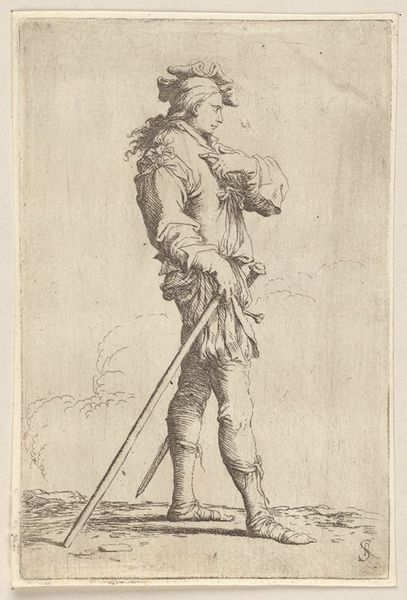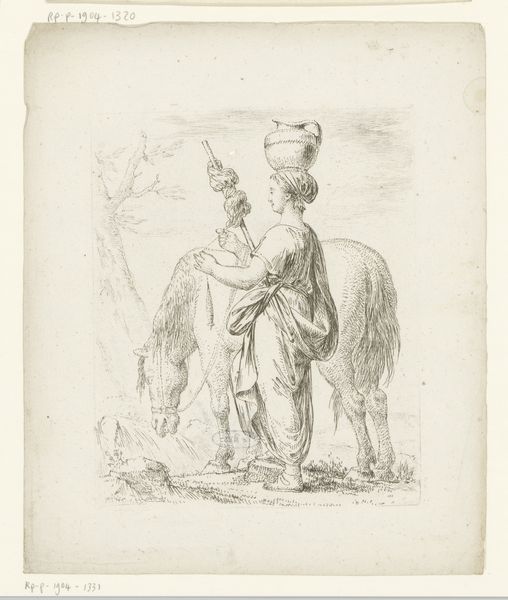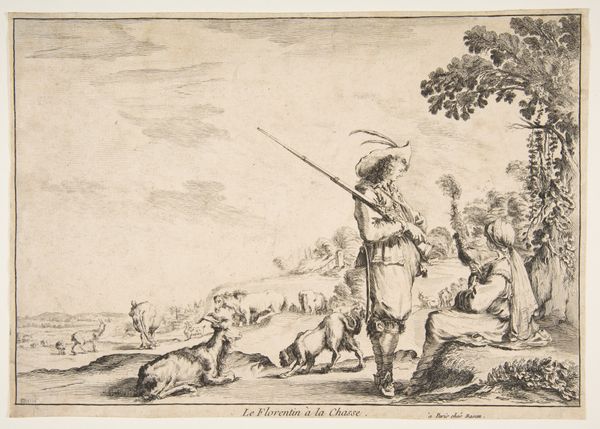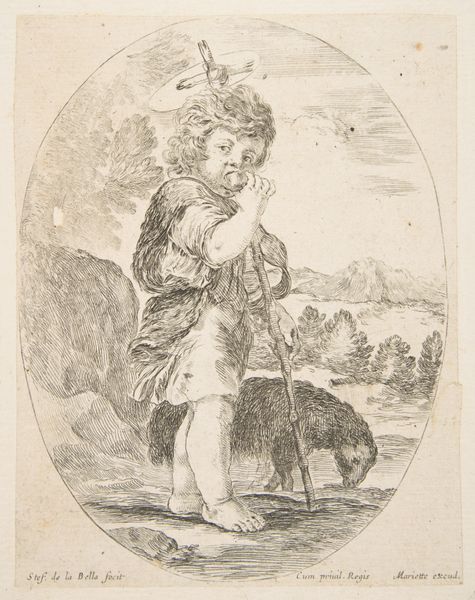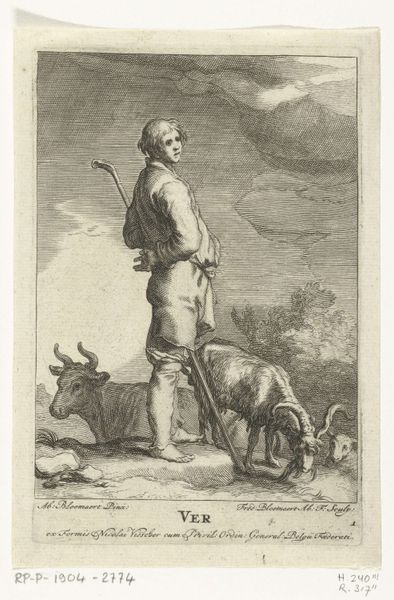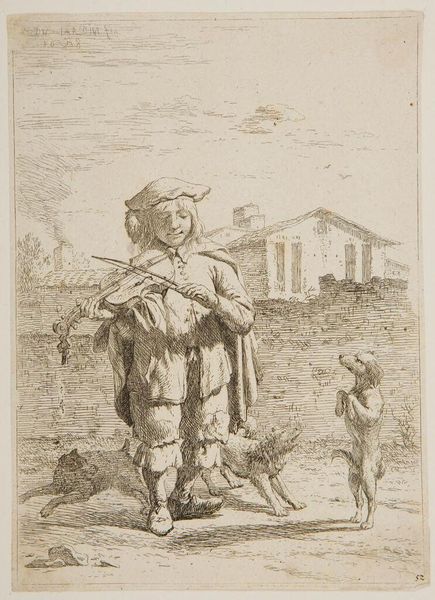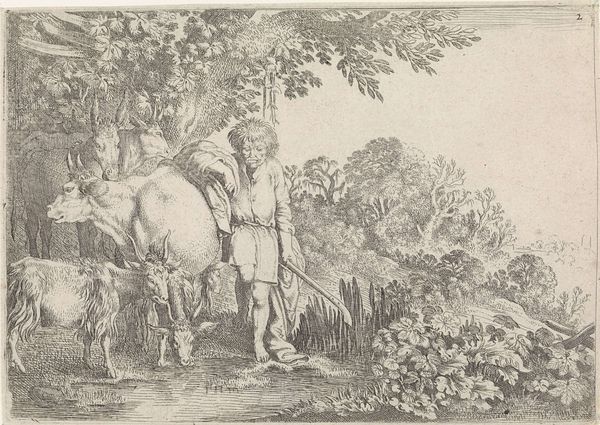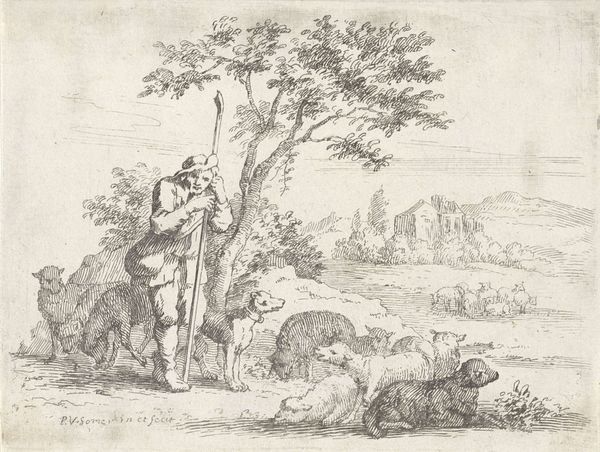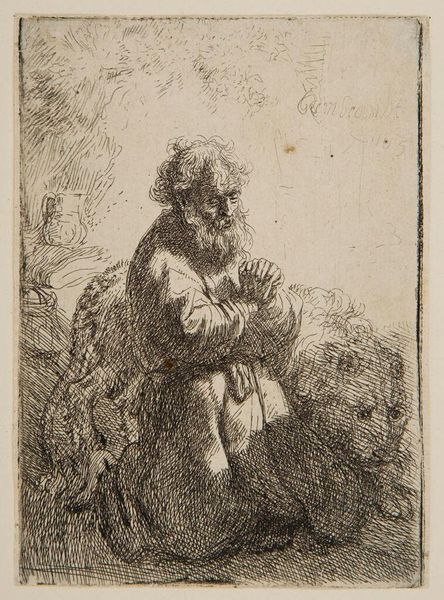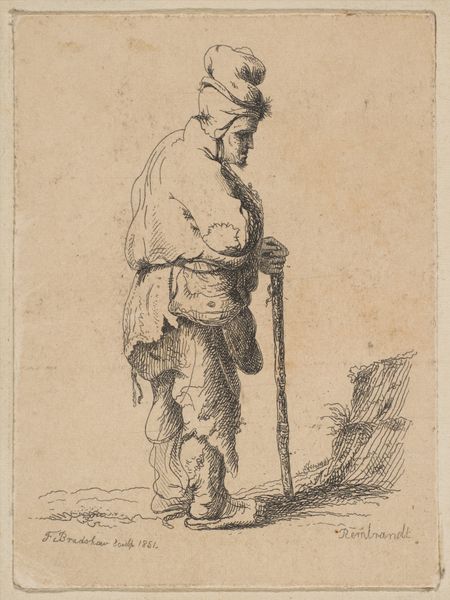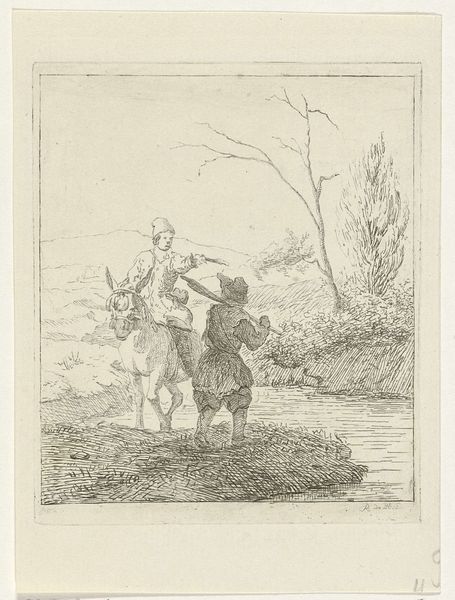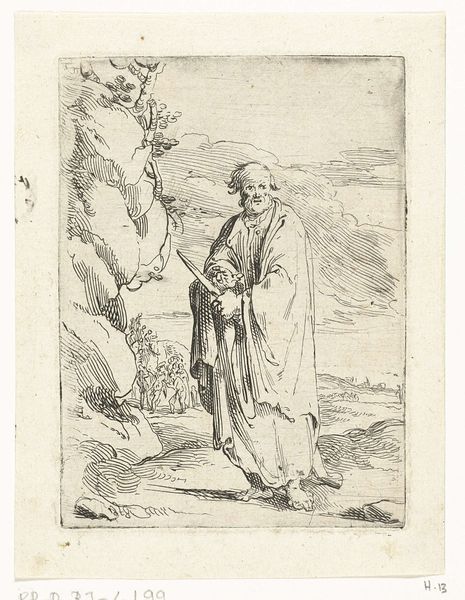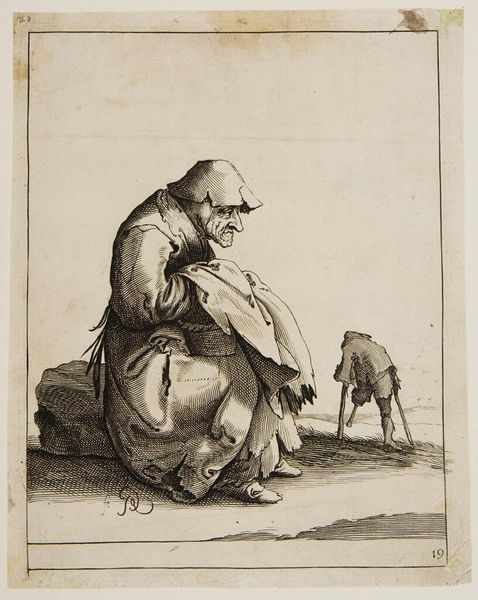
etching
#
narrative-art
#
baroque
#
etching
#
landscape
#
figuration
#
line
#
genre-painting
Dimensions: height 63 mm, width 50 mm
Copyright: Rijks Museum: Open Domain
Stefano della Bella created this etching, depicting the prodigal son tending swine, sometime in the 17th century. The etching process involves coating a metal plate with a waxy, acid-resistant substance. The artist then scratches an image into this coating, exposing the metal beneath. The plate is then immersed in acid, which bites into the exposed lines, creating grooves. Ink is applied to these grooves, and the plate is pressed onto paper, transferring the image. The result is a print with a distinctive character. In this case, the fine, delicate lines create a sense of atmosphere and texture. The etching technique, which emerged during the Renaissance, allowed for a greater level of detail and tonal variation than earlier printmaking methods. Etching also allowed for a more direct, spontaneous approach, as the artist could draw freely onto the plate. But prints were also a way to multiply images, bringing them into wider circulation. The story of the prodigal son would have resonated with a broad audience, offering a moral lesson about repentance and forgiveness. Della Bella was not only a skilled artist but a businessman, understanding how to meet market demand. The scale of the image tells us it was meant for private contemplation, a devotional object for the home.
Comments
No comments
Be the first to comment and join the conversation on the ultimate creative platform.
